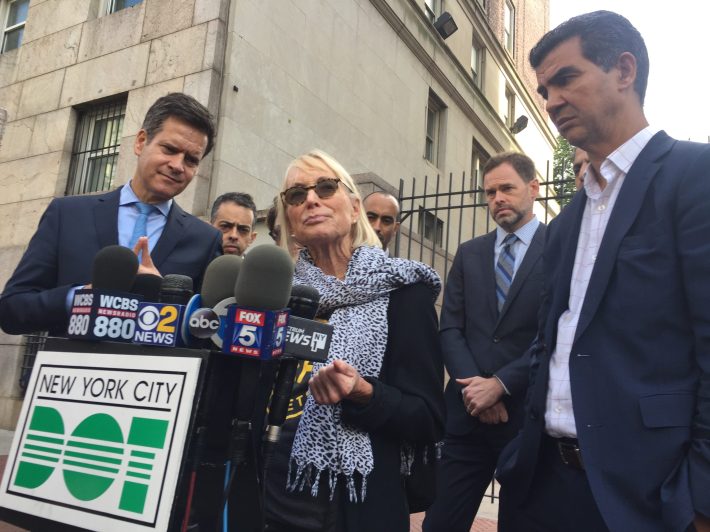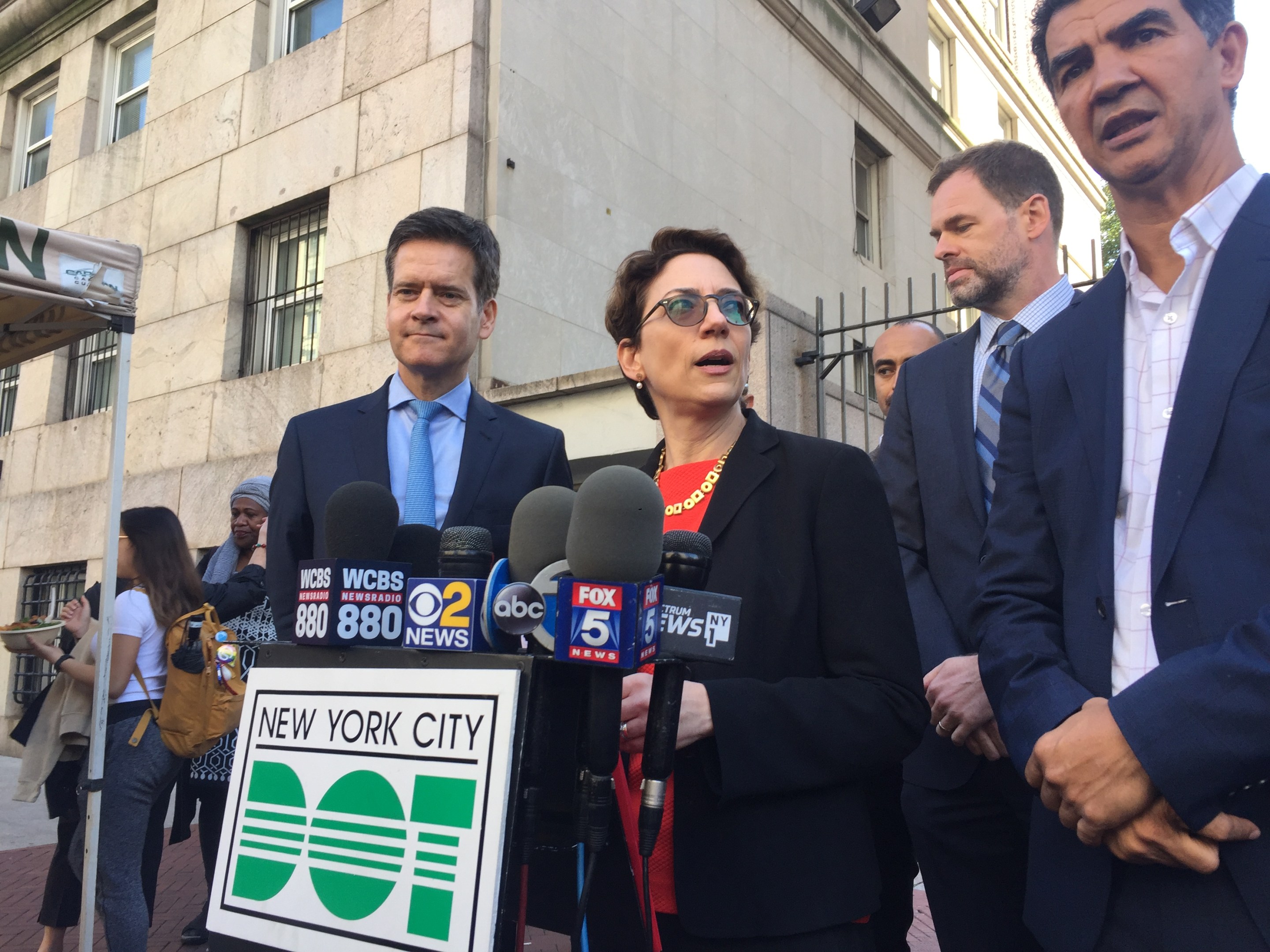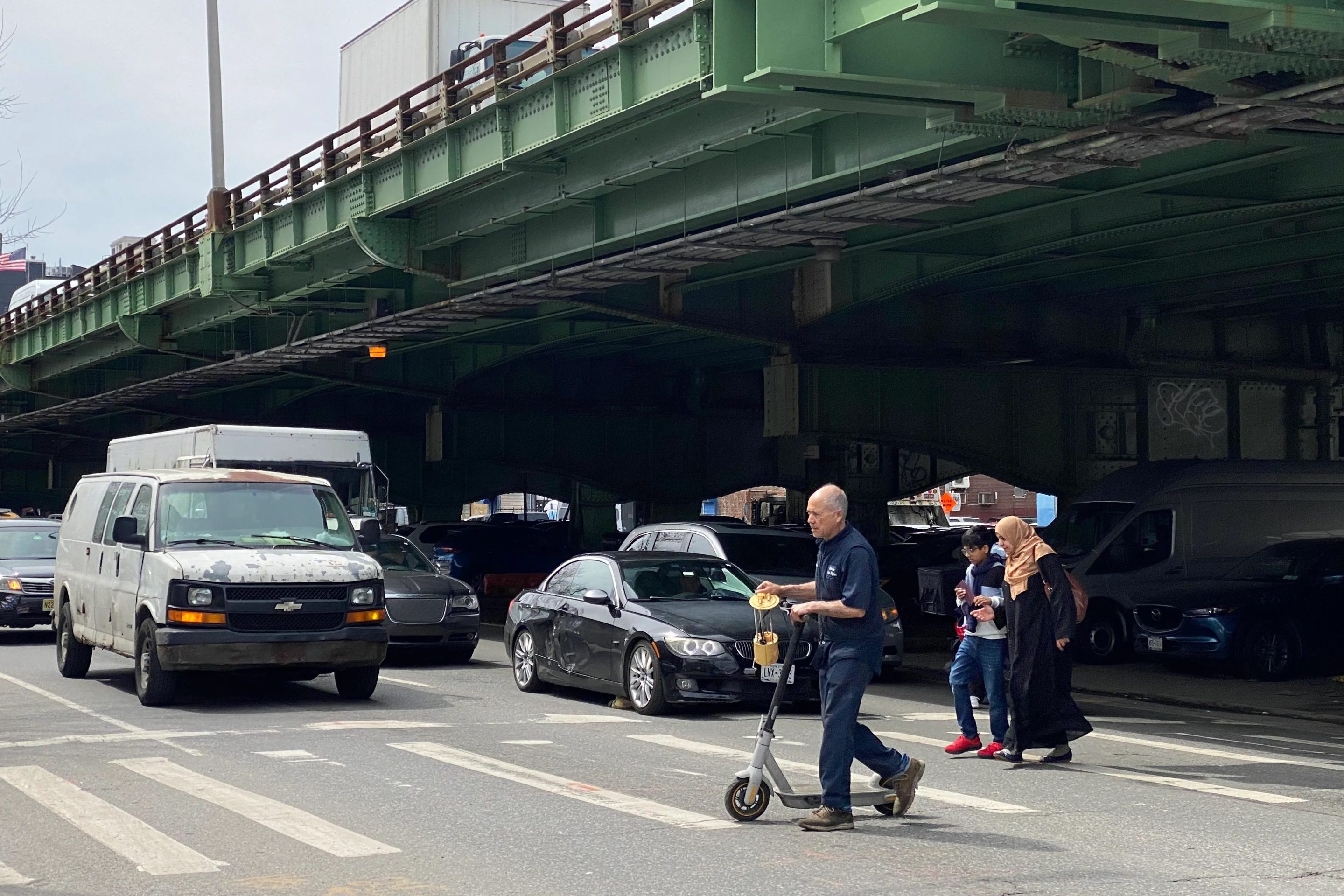The speed limit on the West Side Highway will drop from 35 to 30 miles per hour, starting on Saturday with enforcement beginning 60 days later, in a bid to reduce the shocking number of crashes and fatalities along a grade-level roadway that drivers treat as a speedway.
The new speed limit will be coupled by new signal timing to encourage drivers to stick to 30 miles per hour so they will be "rewarded" with more green lights, said city Department of Transportation Commissioner Polly Trottenberg, who made the announcement on Thursday with her state counterparts and safe streets boosters State Senator Brad Hoylman, City Council Member Ydanis Rodriguez and Transportation Alternatives Executive Director Danny Harris.
The new rule will cover the at-grade portion of the boulevard-style roadway between 59th Street and Battery Place — a five-mile stretch where a dozen cyclists and pedestrians have died since 2013. Streetsblog first reported the proposed speed limit reduction over the summer.
The announcement came at one of the more insane press conferences of recent memory, at which Trottenberg and other supporters of safer streets were under relentless questioning from car culture defenders in the media — one TV cameraman even asked Trottenberg, "Do you see any downside in reducing the speed limit?"
Trottenberg replied that there is no downside to discouraging speeding, and reminded drivers that tickets from automated camera enforcement are not issued until a driver exceeds the speed limit by at least 11 miles per hour — and that people who get such tickets are 60 percent less likely to ever get another because reform their anti-social, illegal and unsafe behavior.
"Downside? You'll keep your fellow New Yorkers safer. And, as a motorist, wouldn't you rather drive at a safe speed and if a collision happens, know that everyone walked away from it?" she asked, obviously rhetorically.
A CBS2 reporter pressed back on the notion that the roadway is unsafe because of driver speeds, asking Trottenberg if the dead pedestrians and cyclists were crossing legally, a suggestion that such deaths need not be addressed by the city if the victims could be said to bear some blame.
Trottenberg dismissed the question, reminding drivers that it's just better — easier, safer, calmer — for everyone if they drive at a reasonable speed. And Rodriguez pointed out that it doesn't ultimately matter if the pedestrian or driver is to blame for a crash — at slower speeds, the pedestrian is far more likely to survive a crash, which is the city's larger policy goal.
The same reporter later asked if crashes could be avoided by segregating the pedestrians with overpasses "like they have in Las Vegas." Trottenberg dismissed the question as something anathema to New York's urban vitality — especially given the efforts that state and local officials have made over the decades since the elevated West Side Highway was torn down in 1989 to expand Hudson River Park and open up the waterfront for recreation and active transportation.
Such questions persisted until Trottenberg asked Mary Beth Kelly of Families for Safe Streets to address the reporters. Kelly's husband, Dr. Carl Nacht, was killed by a drive while the couple cycled — with the light! — on the Hudson River Greenway in 2006. Kelly talked about resulting 13 years of activism that followed her husband's death to "chip away" at all the factors that create unsafe conditions on the roadway.

"This is why we are doing this! This is why we are doing this!" she said. "On that day when my husband was killed, people lost their doctor, their soccer coach, their friend, their uncle." (TV reporters asked no more questions after that, suggesting that perhaps Kelly should be DOT commissioner.)
Hudson River Park is visited by 17 million people per year and the park's cycling path is the single busiest in North America — statistics that demonstrate how successful the city has been in creating an inviting and attractive place for people.
Given the numbers of users, Streetsblog asked state DOT Regional Traffic Safety and Mobility Director Adam Levine when Gov. Cuomo would reallocate a lane of the highway from drivers and give it to cyclists and pedestrians, who are the majority of people who cross or bike or walk along the West Side Highway.
Levine said it was not being considered.
"It's certainly something that can be looked at in the future, but to remove a lane would congest the road," he said, citing no evidence. In fact, the well-established concept of induced demand — which holds that building more lanes always ends up adding more congestion as drivers fill the newly created space — suggests that eliminating a lane need not necessarily congest the road, as the early success of the city's successful car-free busway project shows.
Kelly cheered the question.
"I look forward to the day when we can get rid of a lane of the West Side Highway," she said.
The change in speed limit on the highway follows a push by activists as well as a push by Hoylman following several deaths on the roadway in 2016, including a cyclist killed by a cement truck driver. There will also be improvements for pedestrians.
The changes are vital for a highway whose lower portions are extremely dangerous for pedestrians and cyclists drawn to the popular Hudson River Park. In 2018 on the stretch between W. 23rd Street and Battery Place, 16 cyclists, 26 pedestrians and 92 motorists were injured, and one motorist killed, in 713 crashes — or roughly two crashes per day on just three miles of roadway.






